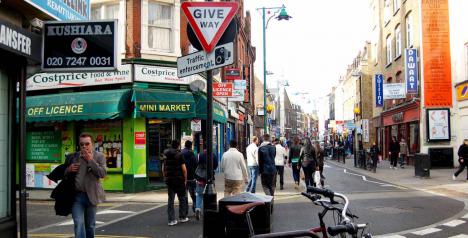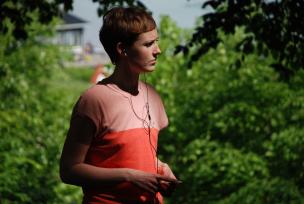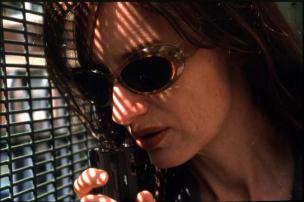
WHEN ART CAN BE IN AN IPOD
Janet Cardiff created one of her so-called audio walks for Louisiana: With an iPod in your pocket and headphones on, you are invited to follow her voice and her footsteps on a tour in the Sculpture Park: “I want you to walk with me through the garden.” The story starts in a place where strange things that she does not understand have occurred. We hear the sounds of the place: ocean waves, leaves rustling and other museum visitors. But what sounds are coming from the headphones and what sounds are coming from out in the park right now? A helicopter, a dog and music. Suddenly it feels as if you are standing in the middle of a movie.
In the approximately 12 minutes that the audio piece lasts, fiction and reality are mixed together. Cardiff sends us out into corners of the park that we might normally overlook. Along the way, she comments on the things we see and also things we do not see. Her works thus play on our usual notion that the eye sees what the ear hears at the place where we are. It is an approach that can seem both disturbing and seductive at the same time.
Another work, Missing Voice from 1999, which takes place in London, is based on the same mixture of the appealing and the unsettling. This audio walk is around 50 minutes long, and it also relates a detective story between fiction and reality, while one wanders around a part of London that has undergone profound changes since the work was created.
 Urban image from the area around Brick Lane in London, where Missing Voice takes place.
Urban image from the area around Brick Lane in London, where Missing Voice takes place.
When you take the headphones off, you have gained new experiences of the place, whether it is Louisiana or London. Not because it looks different, but because you listen to the sounds of the place in a new way and because you have new images in your mind’s eye that you cannot easily forget.
You experience Louisiana Walk # 14 among other works of art in Louisiana Sculpture Park. The other works are all of a very physical and visual nature and are more immediately recognizable as works of art. The only physical manifestations of Cardiff’s work are an iPod with recorded words, sounds and snatches of music as well as a chair that is located in the park at the end of the tour. In its material form, one can thus easily “overlook” this work – you must know that it’s there and request it at the entrance to the museum.
FILM
FACTS
The Canadian artist Janet Cardiff (1957) lives and works in both Berlin and Canada. She uses sound as her primary material when she creates art. Cardiff is known mainly for her audio walks, which she has created for a wide variety of institutions, especially museums, since the late 1990s. She uses a binaural recording technique in which the sound is captured by small microphones placed in the ears of a doll. This creates a convincing three-dimensional sound effect when the recording is played back. Cardiff’s audio walks were originally created for the Walkman. Since then, the Discman and afterward the iPod have taken over, but the principle is the same.
Louisiana Walk # 14 was commissioned for Louisiana in connection with the NowHere exhibition in 1996. It was the first time Cardiff worked with cinematic effects in a walk, effects that she has since experimented further with. In 1999, she created Missing Voice, her longest audio walk at about 50 minutes, in London – from Whitechapel Library (today Whitechapel Gallery) – to Liverpool Street Station. This work was created at the suggestion of Artangel, a British arts organization that invites artists to create unconventional works outside the museum context.
Together with her husband, George Bures Miller, Cardiff also works with installations in which sound plays a central role.
ACTIVITIES
Go in pairs, and find a place near the school that you both know very well. Each of you must find a piece of music or another audio track that you think fits the site. Then exchange the sounds with each other and discuss how the sound affects your perception of the place. Tell each other why you chose the sound that you did.
Sit somewhere in Louisiana. Close your eyes for one minute and listen. Then write down your impressions.
Why did you choose this particular location? Did your expectations of the sounds of the location match what you experienced?
Draw inspiration from Cardiff’s way of using a place like a Rorschach test. Find a place to interpret and investigate. Spend some time at the site. Take notes, either on paper or in an audio recording. Listen to what people say, how they move around, what they do. Notice the things that people walk past without noticing or what they leave behind. Notice what things are like today in particular – hot, cold, windy?
When you are at home or back at school, you may want to investigate the history of the location. Are there, for example, street names, squares or anything else that can tell something about how the location was used previously? How do you imagine that it will look in the future? What fictional or factual stories can you tell about the place? Use your notes to compose a text, film, audio recording or another presentation for the class.
Tip for students: You may benefit from listening to more of Cardiff’s works on her website: www.cardiffmiller.com
Do research on a certain place or area in the city before you visit it and then reexamine it when you arrive at the location.
Is the place as you expected it to be?











